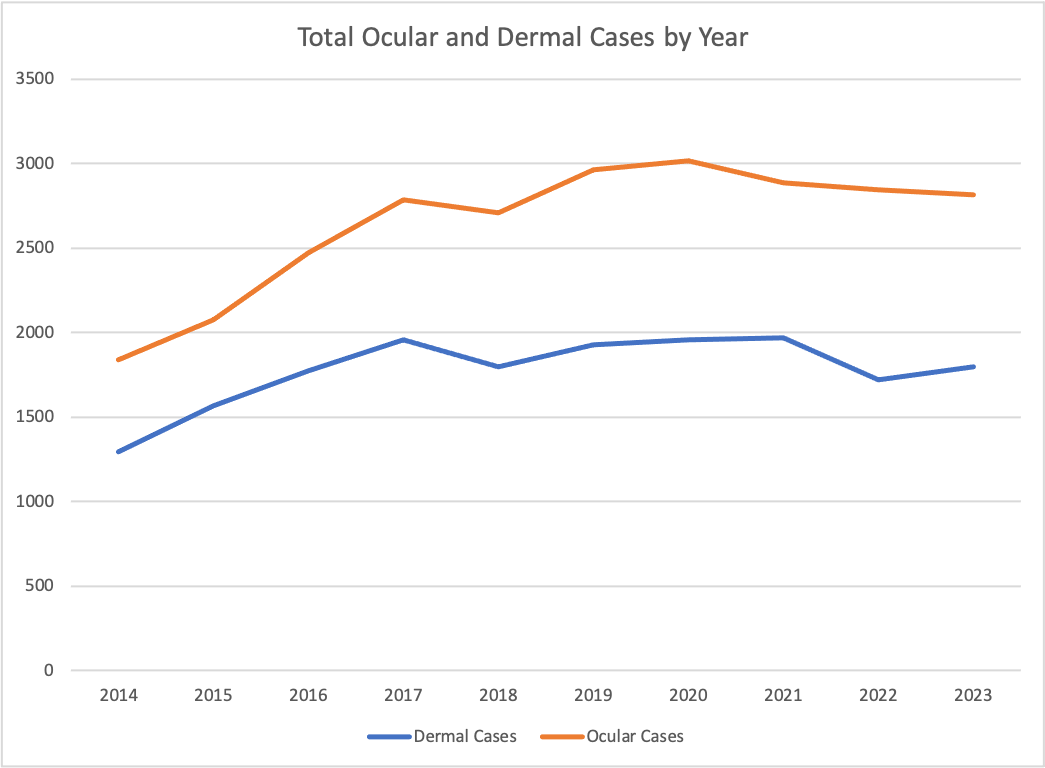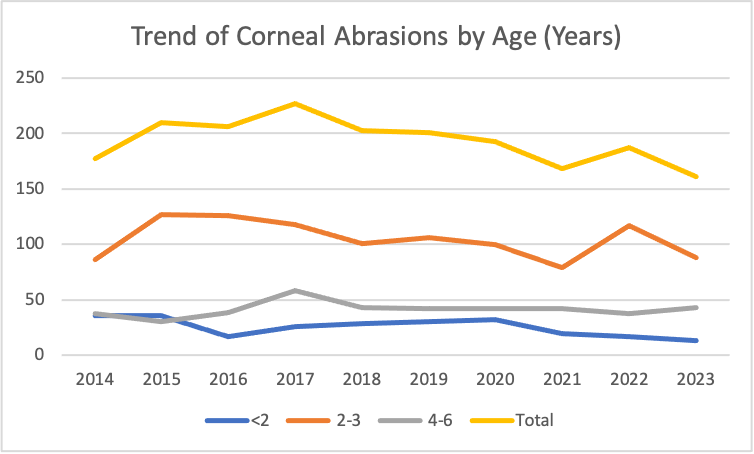Injury Prevention 1
Session: Injury Prevention 1
401 - Pediatric Eye and Skin Injuries from Single Use Laundry Detergent Packets
Sunday, April 27, 2025
8:30am - 10:45am HST
Publication Number: 401.5767
Joshua Rice, Nemours Children's Hospital, Wilmington, DE, United States; Ran Zhang, Nemours Children's Hospital, Wilmington, DE, United States; Anthony Jaworski, Childrens Hospital of Philadelphia, Philadelphia, PA, United States

Joshua M. Rice, MD (he/him/his)
Pediatric Emergency Medicine Fellow
Nemours Children's Hospital
Wilmington, Delaware, United States
Presenting Author(s)
Background: As single use liquid laundry detergent packets (LLDPs) or ‘Tide Pods’ become increasingly popular with consumers, children are at high risk for exploratory exposure to their contents. Ocular and dermal exposures are primary drivers of injuries in this population.
Objective: The aim of this study was to describe the epidemiology of pediatric eye and skin injuries sustained after exposure to LLDPs in the United States and to assess for changes to these injuries after the publication and adoption of ASTM voluntary safety standards between 2015-2017.
Design/Methods: Retrospective cohort. The American Association of Poison Control Centers’ National Poison Data System (NPDS) was queried for ocular and dermal injuries after exposure to LLDPs among children <= 18 years old reported to US Poison Control Centers (PCCs) for the ten-year period 01/01/2014 through 12/31/2023.
Results: Database query identified 34,137 cases over the ten-year period. Total number of ocular and dermal injuries increased from 2014-2017, stabilized between 2017-2021 and downtrended slightly from 2021-2023 (Fig 1). The median age of patients was 2-years-old, with the vast majority of injuries occurring in children 3-years-old or younger (67% of ocular and 81% of dermal cases). Injuries of moderate/major severity accounted for 9% of all cases (12% of ocular, 6% of dermal) and show a significant reduction post-2017 from 10.7% to 8.4% (Tab 1). Corneal abrasions were an important contributor to moderate/major effects, with 1933 cases reported over the study period. Despite accounting for only 7% of all ocular cases, corneal abrasions contributed to an outsized proportion of admissions to noncritical (16%) and critical care (12%) units as well as patients treated and released from hospital. Corneal abrasions saw a downward trend throughout the ten-year period (Fig 2) with a significant reduction in proportion of patients with these injuries post-2017 (Tab 1).
Conclusion(s): Laundry detergent packets’ increasing use in homes puts children at higher potential risk of exposure. Since 2017 there has been a significant reduction in the proportion of patients reported with moderate/major injuries including corneal abrasions, potentially indicating some success of the voluntary safety standard. However, pediatric ocular and dermal injuries due to LLDPs remain a public health concern with a high number of hospital encounters and minimal change to hospital admissions pre- and post-safety standard.
Figure 1
 Trend of ocular and dermal cases throughout study period.
Trend of ocular and dermal cases throughout study period.Figure 2
 Trend of corneal abrasions throughout study period grouped by age in years.
Trend of corneal abrasions throughout study period grouped by age in years.Table 1
Tab 1 edit.jpegDescriptive data for ocular and dermal injuries pre- and post-2017, highlighting significant changes following the adoption of the ASTM voluntary safety standard for LLDPs.

